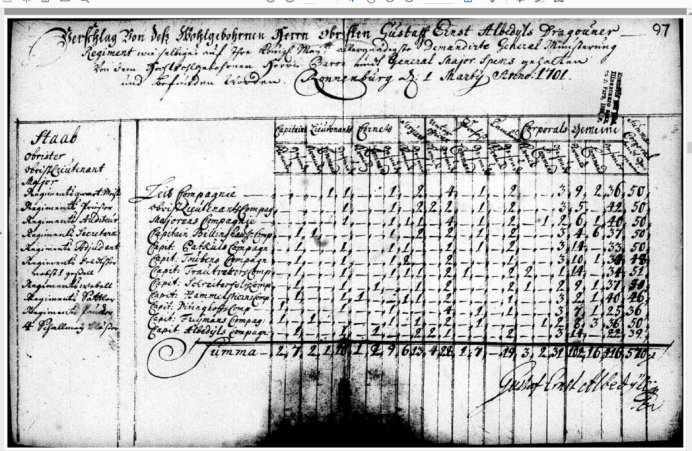Topic: Battles
On 29 July 1702 three soldiers who had participated in the Hummelhof battle were interrogated in Riga. They all belonged to Governor Frölich's regiment. Jörgen Busch belonged to the Colonel's Company, Heinrich Sassau to the Major's Company and Hans Schwartz to the late Captain Pontus Company.
Busch stated that as the army left the camp in order to march towards Hummelshof a force of 150 horse and 100 foot were ordered to hold a bridge. They were accompanied by two guns under the command of a captain of artillery. Busch didn't know the name of the cavalry commander, but lieutenant Campenhausen was in charge of the infantry. They remained at the bridge the entire night. At about 6 the following morning the enemy was so close that skirmishes broke out with the outposts. At that point the cavalry commander wanted to remove the guns and reported to Major General Schlippenbach how the situation was developing. The enemy was pressing very hard and the cavalry commander decided that he could not wait for Schlippenbach's instructions. Order for retreat was given and the cavalry was supposed to cover the infantry, but as the enemy kept pushing forward the cavalry started fleeing through the infantry. Lieutenant Campenhausen and ensign Nöding, who were on horseback, were caught up in this.
Some of those on foot were cut down, others tried to save themselves by running away and hiding in the bushes. Busch and his companions were hiding for three days and two nights before they made their way back to Riga. Five other soldiers from their regiment had been hiding with them, but they became separated.
Sassau stated that Busch had told the truth and Schwartz added that they on the third day saw the enemy burning a lot.
Frölich ordered that the three men should be searched. How much ammunition did they have? Busch had 23 cartridges in his bag and his musket was loaded. He also had a number of musket balls of various sizes. Schwartz had 20 cartridges, 30 full-sized musket balls and several smaller ones. Both stated that neither the guns nor the cavalry had fired a single shot and no one had given any orders to resist. Sassau was a pikeman and he said that the pike had been broken by a fleeing horseman. He had no ammunition.
Source: EAA.278.1.XV-0-50 (Rahvusarhiiv, Tartu)


